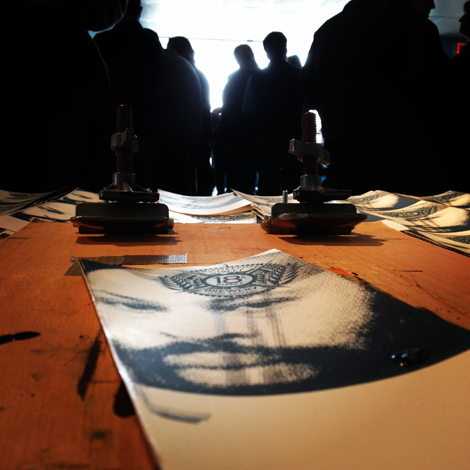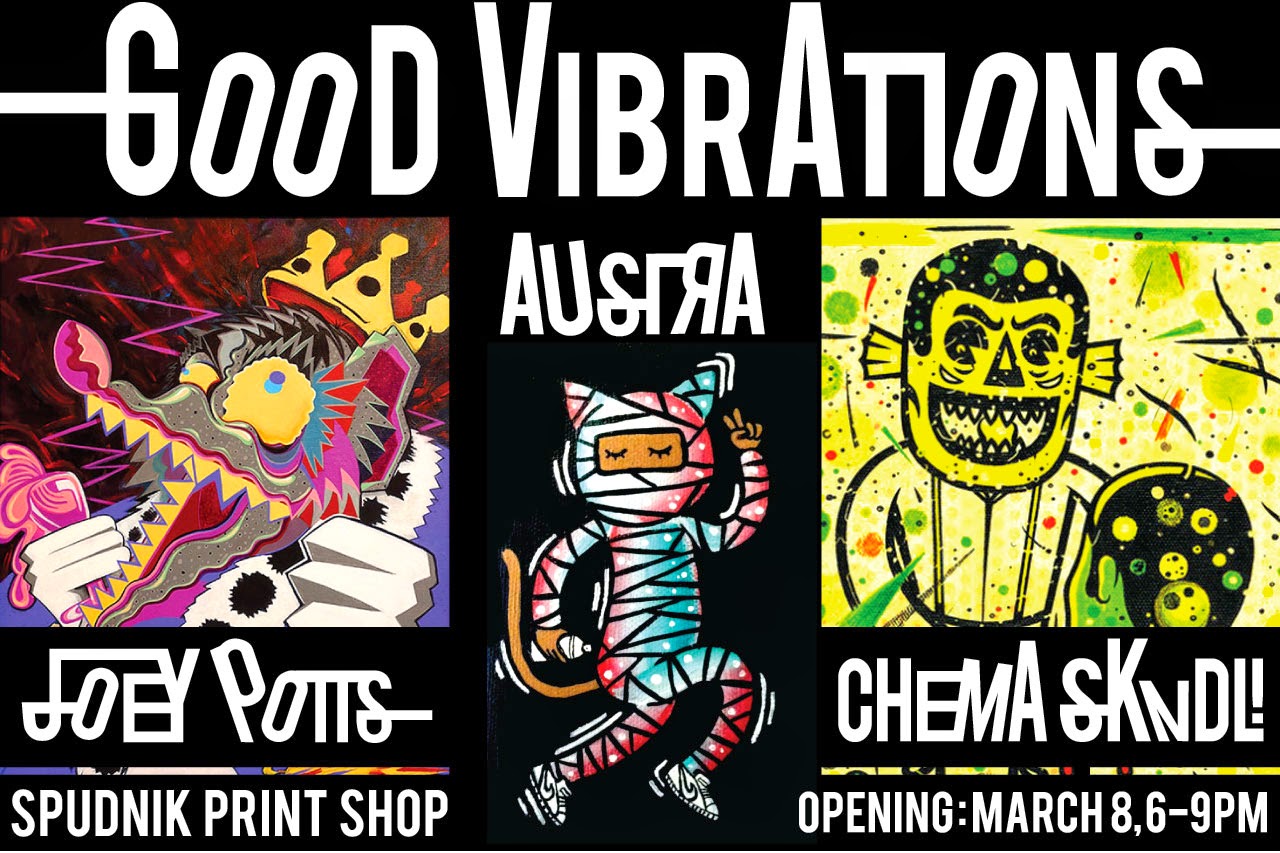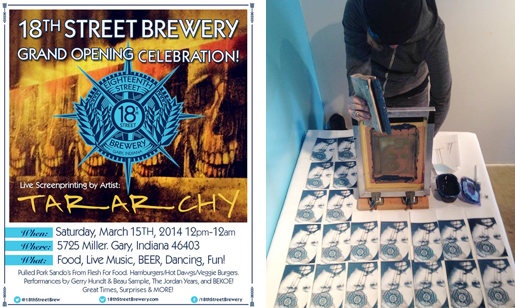My work is consistently centered on themes regarding the mind-body-spirit connection of human existence and the universe. I learn from what I make, so my understanding and direction is always gaining nuance and clarity. Most recently, I consider this mind-body-spirit connection exemplified in the activities we are passionate about.
FOUNDATION
I began a serious study of yoga with a focus on my personal practice in January. My first works this year appropriate respected yogi and teacher BKS Iyengar in the asana Tadasana. Asana is the technical word for a yoga pose. Each asana (pose) has a name, such as Tadasana. Tadasana is the first asana demonstrated in the quintessential yoga reference, Light on Yoga, and represents a fresh start—for a yogi coming to the mat and for me to my work. Subsequently, I have symbolically used Iyengar demonstrating other asanas.
As a beer lover, in love with a brewer, I spend a good amount of time immersed in Chicago craft beer. I met Drew Fox, founder/owner/head brewer of 18th Street Brewery, well before the brewery's official opening. I respect the talent, determination, and dedication that a brewer's passion demands and that which is evident in Drew and the entire 18th Street crew. This kind of zeal can be channelled productively by a strong mind-body-spirit connection.
As an art lover and artist, I also spend a good amount of time immersed in Chicago's art and have been a fan of Joey Potts art for close to a decade. Joey is the primary artist and creative director for 18th Street Brewery. His label art sets a tone for the beer tasting experience and can be taken in again and again just like the beer itself. Eighteenth Street's label art would be a huge inspiration in the work I made for the show.
INSPIRATION
I began by taking a look at the feng shui bagua in relation to 18th Street's floor plan. The bagua is a tool used in feng shui to help analyze the energy of a space in relation to the purpose of the space and the people who experience it. The understanding I gain influenced decisions such as placement, color, and content.
And in taking a more pointed look at 18th Street Brewery beers, I honed in on Hunter. It's a double milk stout, high gravity and robust. Strong and solid. An exemplary beer for 18th Street Brewery. The beer Hunter was named after Drew's son and Joey's original illustration was developed with him in mind. This reinforced the direction as the art would be on view in an area of the brewery positively influenced by themes of family and community.
 |
| 18th Street Brewery's Hunter Art |
When first asked about my interest in putting up work at 18th Street Brewery, an image of Iyengar in a particular asana came to mind. Unlike what most people associate with yoga, this asana looks bold and fierce. This asana is called Simhasana. Simha means lion and this asana is dedicated to Narasimha, the man-lion incarnation of Vishnu. Yogis are often referred to as seekers [of meaning, bliss, enlightenment...]. Lions are hunters. This half man (half seeker) half lion (half hunter) incarnation would be the symbolic foundation on which to create the work.
 |
| Iynengar Demonstrating Simhasana |
CULMINATION
In addition to hanging art for the show, Joey and I discussed the idea of a mural for the largest wall in the event room. We talked about using a mural approach to embellish the wall, featuring the pieces on display. I've always been driven to work on a large scale, and under the influence of Chicago's graffiti and street artists, am interested in adapting screen print for mural making. As my first attempt, the strategy was to keep things simple. I used only two screens of large halftone gradients, exemplary of screen printing.
The majority of the wall embellishment was screened in a bright blue flowing pattern representative of wind and water to balance the fire, wood, and earth present in the featured pieces. In addition, feng shui is translated literally as wind water. Fluorescent green and yellow are incorporated for further balance in terms of color and represent the sun and earth.
Although I use screen printing non-traditionally, I leverage the medium's innate ability to produce multiples. Deeper symbolism can manifest from an image applied in a variety of ways. For the show at 18th Street Brewery, I envisioned 2 simple Simhasana/Hunter inspired pieces on either side of a more elaborate central piece. The event room walls are lined with small two-seater tables and I would create a small piece for each table.
The two Simhasana/Hunter pieces (titled Yin Hunter Shi and Yang Hunter Shi) act as imperial guardian lions, also known in feng shui as fu dogs. Fu dogs are symbols of protection and are usually displayed as a couple. Yin Hunter Shi represents the feminine in hot pink and metallic silver, while Yang Hunter Shi represents the masculine in fluorescent red and metallic gold.
 |
| Yang Hunter Shi |
The central piece (titled Fierce Seeker) began in response to the snakes on the Hunter Coffee label. Although my motivation was in homage, snake imagery is rich in spiritual and archetypal symbolism. Like yogis, hunters are seekers [of nourishment, territory, game...] of a more aggressive nature. Fierce Seeker represents the yin (passive) and yang (active) energies in life symbolically expressed through passion. The background print on this piece is inspired by Chloe label art and organically balance the sharpness of Yin & Yang Hunter Shi.
The small table pieces reference both new imagery specific to the 18th Street show and imagery re-occurring in my work. The combination of imagery provides a new context in which to consider the concepts I explore through the work.
The collection created to show at 18th Street Brewery marks a significant step in my work. In the context of beer and 18th Street Brewery, Iyengar is an icon of an ideal state. The history and meaning behind Simhasana supports the link between 18th Street Brewery and Iyengar. These associations reveal a universal nature to the mind-body-spirit connection, not one limited to the practice of yoga.












